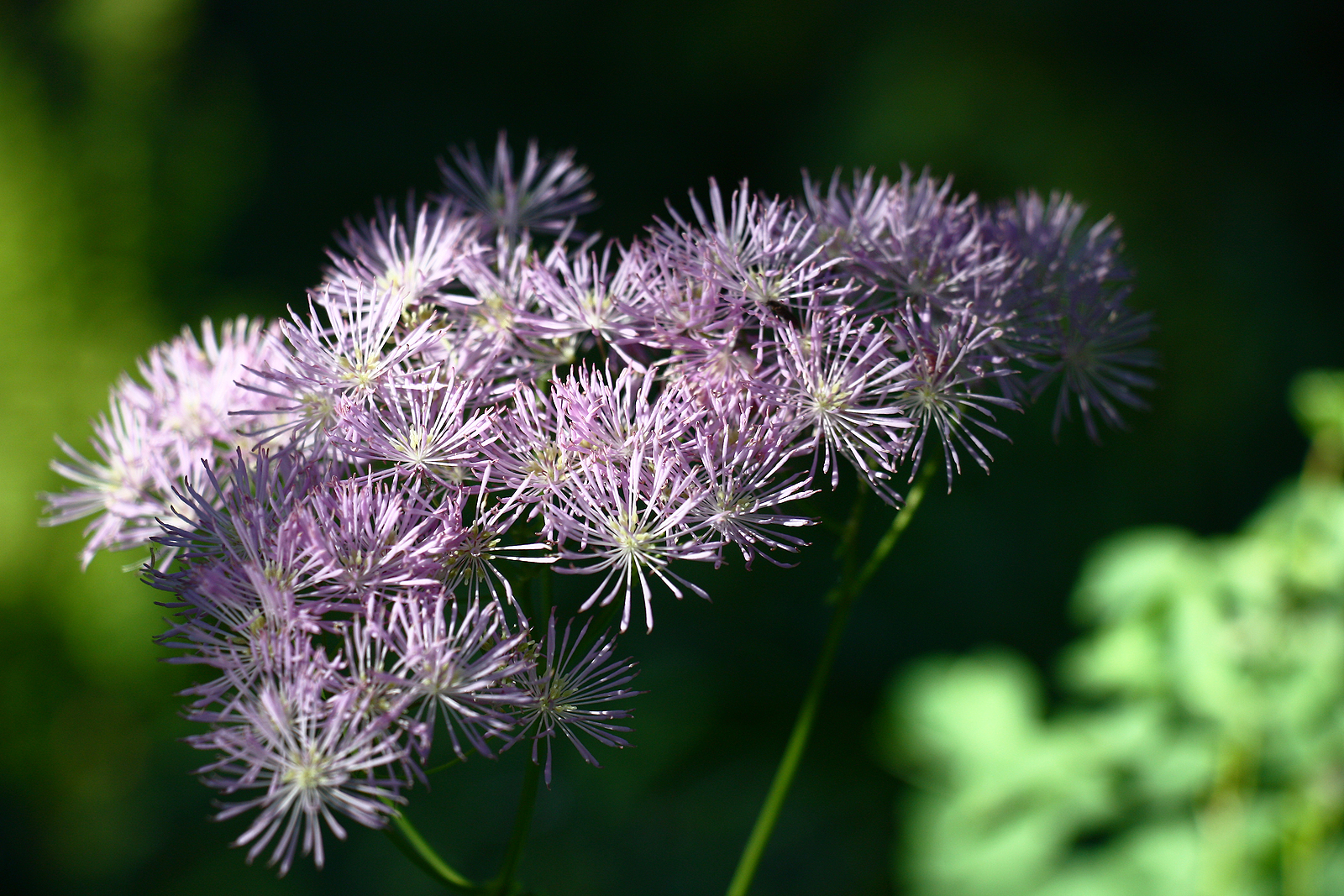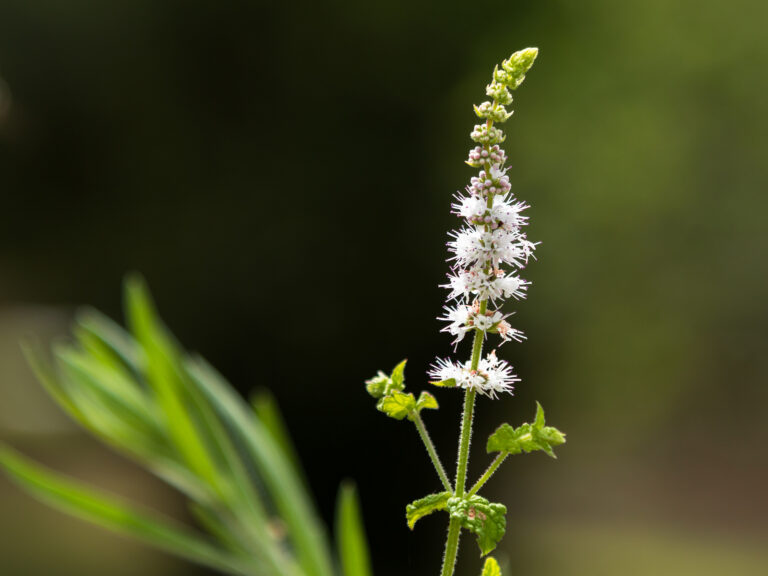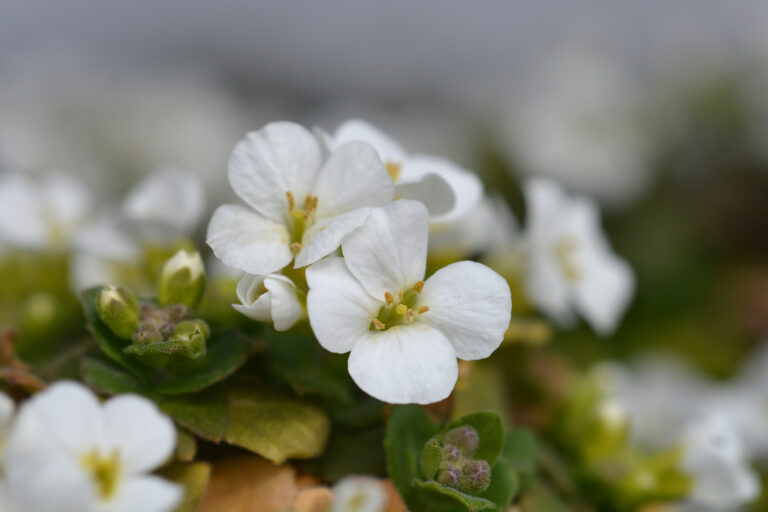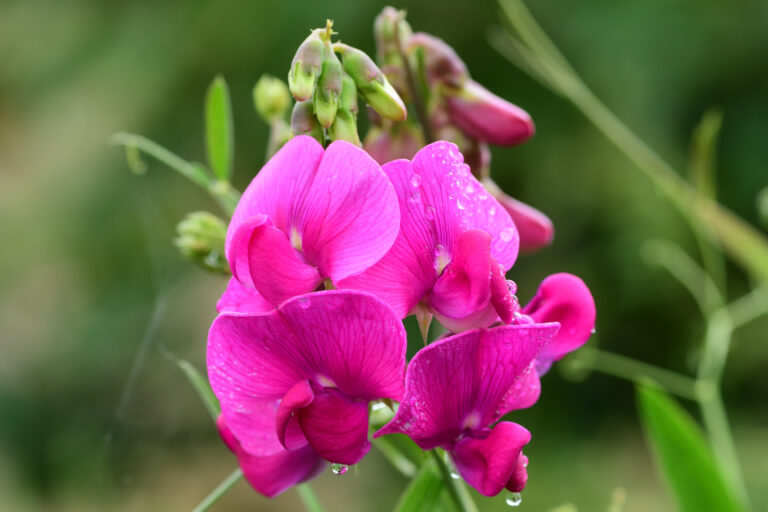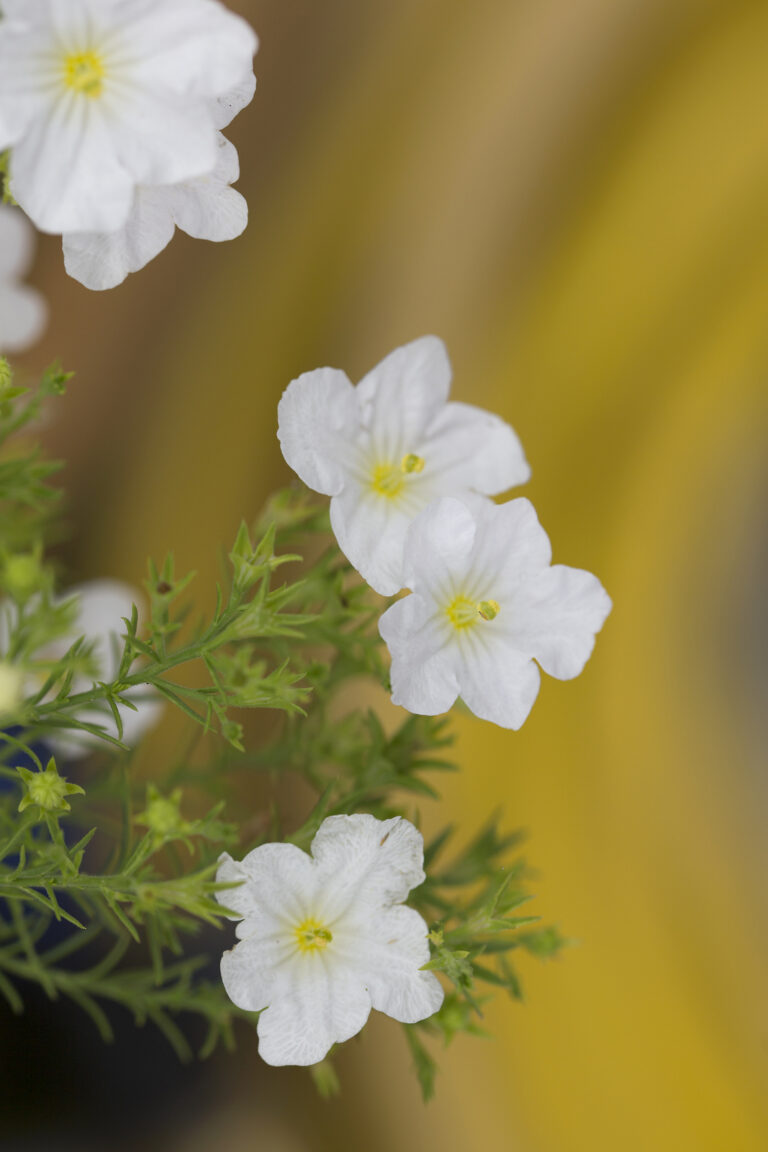How to Grow Meadow Rue — Thalictrum
Thalictrum—commonly known as meadow rues—bear petalless flowers that create a showy and delicate effect in the gardens. Flowers are borne in large-branched clusters above handsome, lacy-textured, blue-green featherlike leaves. The flowers are simply clusters of prominent stamens.
Thalictrum is best placed against a dark green hedge or border plants for best effect. The delicate flowers are showy foil placed with sturdier perennials.
There are about 130 species in the Thalictrum genus. All are perennials.
Most meadow rues need some winter chill. All thrive in dappled sunlight, especially in woodland settings.
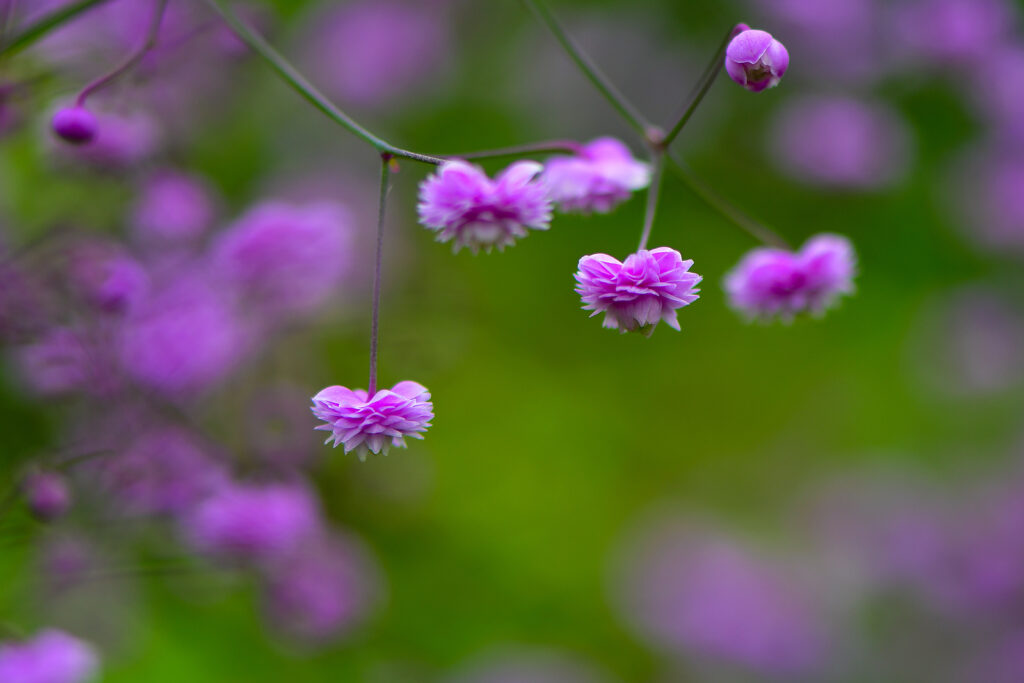
Get to know Thalictrum
- Plant type: Perennial
- Growing zones and range: Zones 4 to 9
- Hardiness: Hardy to -20°F (-29°C)l foliage dies back after frost in autumn
- Height and width: 12 to 36 inches (30-91cm) or more and just as wide depending on the variety.
- Foliage: Lacy-textured, blue-green leaves usually divided several times in a pinnate, featherlike, fashion with lobed or toothed leaflets.
- Flowers: Delicate petalless flowers borne in large-branched clusters on sparsely leafed stems usually with prominent clusters of stamens
- Flower colors: Purple, lilac, yellow, white
- Bloom time: Early summer to fall depending on the variety
- Uses: Effective against dark backgrounds in contrast to sturdier perennials; good cut flower
- Common name: Meadow rues
- Botanical name: Thalictrum
- Family name: Ranunculaceae
- Origin: Moutain regions worldwide, mostly in the Northern Hemisphere
Where to plant Thalictrum
- Grow Thalicturm in partial shade.
- Thalictrum prefers humus-rich, moist soil.
- Thalictrum tolerates full sun provided the soil remains constantly moist.
- Plant Thalictrum where it will get some shade during summer afternoons.
Thalictrum uses and companions
- Plant Thalicturm in the mid-ground of borders; do not hide the foliage.
- Tall species are excellent as background plants for borders or in woodland or wild gardens.
- Use smaller species in a shady rock garden.
- Good garden companions for Thalictrum include Acontium, Bergenia, Digitalis, Helleborus, Hosta.
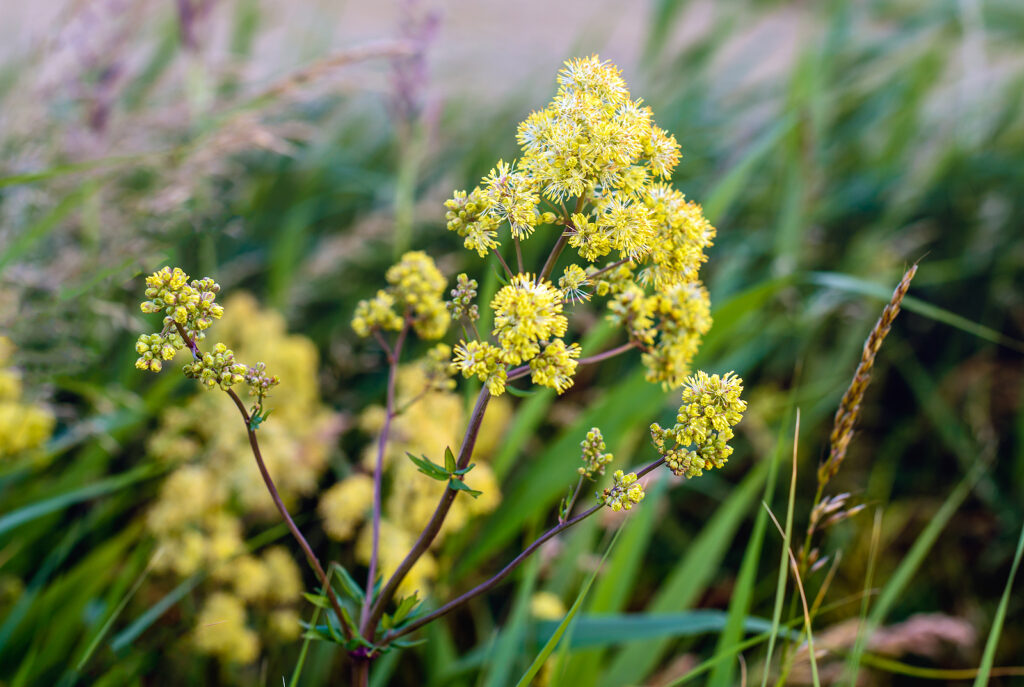
When to plant Thalictrum
- Start seed indoors in spring or autumn and grow on in pots until the following spring. Overwinter young plants in a cold frame.
- Set container-grown plants in the garden in spring or fall.
Planting and spacing Thalictrum
- Sow seed 1/8 inch deep in sterile seed starting mix in pots or evenly prepared soil in the garden.
- Space Thalictrum 12 to 36 inches (30-91cm) apart depending on the variety.
How to water and feed Thalictrum
- Keep the soil consistently moist for Thalictrum.
- Fertilize Thalictrum lightly in spring with an all-purpose fertilizer.
Thalictrum care
- Taller species generally need staking.
- Plants thrive for years without the need to be divided.
Thalictrum pests and diseases
- Thalictrum is usually pest and disease-free.
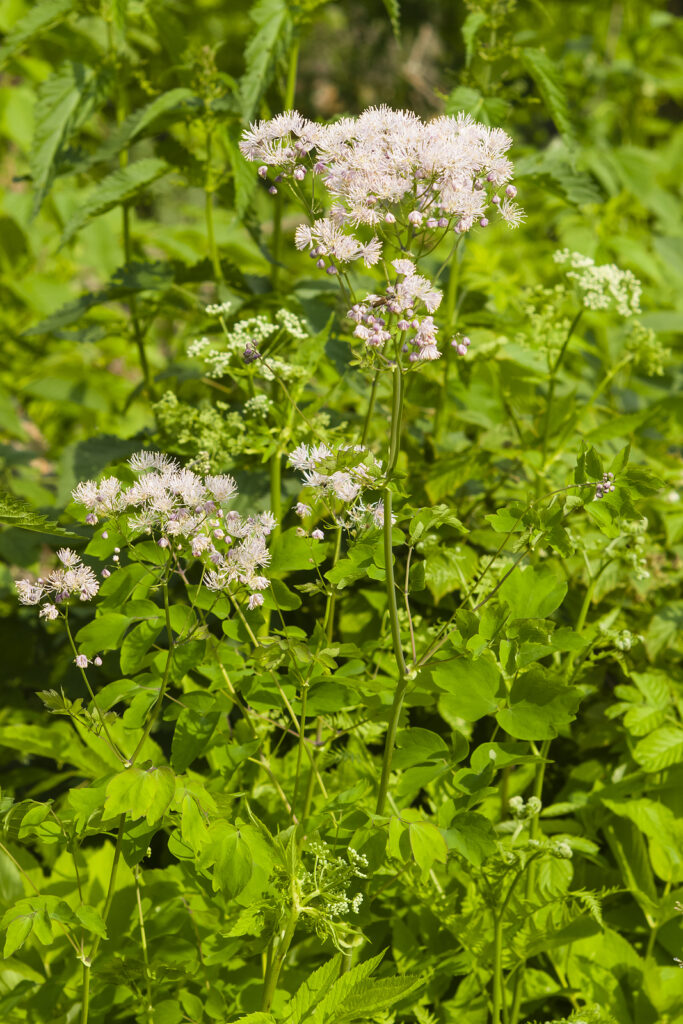
Thalictrum propagation
- Thalictrum can be propagated by seed and division.
- Thalictrum seeds will germinate in about 14 to 20 days at 70°F (21°C).
- Divide Thalictrum in spring or fall; the plant may take 2 years to become established.
- Sow fresh seeds in autumn in pots; keep them in a cold frame over the winter and plant them out in spring.
- Seed can also be planted in spring and grown in pots the first year.
Thalictrum varieties to grow
- Thalictrum aquilegifolium, Columbine meadow rue: Species grows 2 to 3 feet tall and 2 feet wide; mounds of Columbine-like leaves and clusters of showy flowers with purple or white stamens.
- T. delavayi, Chinese meadow rue, Yuan meadow rue: Species grows 2 to 4 feet tall and 2 feet wide; bears branched panicles of fluffy flowers with purple sepals and creamy yellow stamens.
- T. dioicum, early meadow rue: Species grows 1 to 3 feet tall and 2 feet wide; bears panicles of yellow to yellowish-green flowers.
- T. flavum, yellow meadow rue: Species grows 1 to 3 feet tall and forms mounds 2 to 4 feet wide; bears panicles of lightly fragrant yellow flowers.
- T. minus: Species grow to 3 feet tall with greenish sepals and yellow stamens.
- T. rochebrunianum, lavender mist: Species grows 3 to 5 feet tall and 3 feet wide mounds topped with loose panicles of lilac-pink or white flowers.

